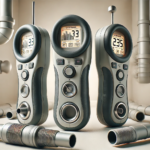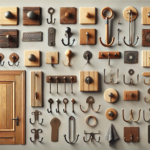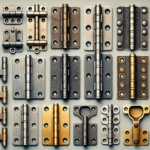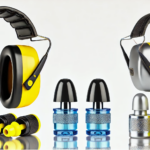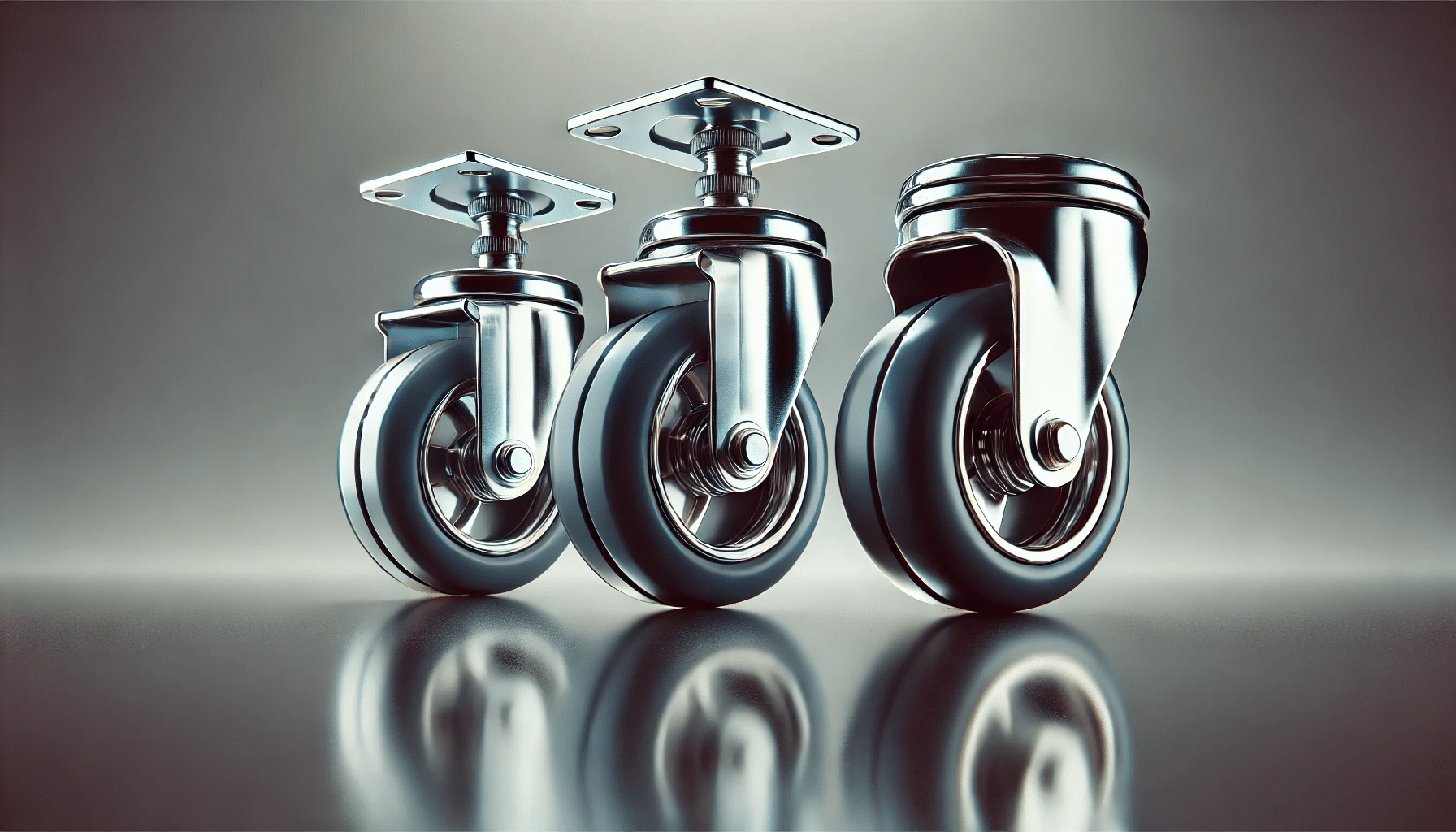
Introduction
When moving heavy objects, furniture, or machinery, castor wheels play a crucial role. Choosing the right fit can significantly impact efficiency, safety, and ease of movement. However, with various types available, it’s essential to understand each of the key characteristics, features, and applications. This article walks you through the different types of castor wheels, how to choose the right one for your needs, and the critical factors to consider.
Understanding Castor Wheels: Why Are They Important?
Castor wheels, often called castors or casters, are small, free-rolling wheels mounted to the base of equipment, furniture, trolleys, or machinery. They are specifically designed for easy mobility of various materials from one place to another. These undriven wheels come with or without a swivel mechanism, enabling directional movement or full 360-degree rotation.
The significance of a castor wheel lies in its ability to ensure smooth movement, reduce wear and tear on surfaces, and prevent potential damage to equipment. They reduce manual lifting, save time, provide convenience, and protect valuable equipment in various applications and spaces. Additionally, the built-in lock mechanism (brake system) and swivelling wheels add robust comfort and safety, making them important components in various facilities.
Classification of Castor Wheels: Exploring Their Popular Varieties
Castor wheels are categorised into a myriad of types based on different characteristics, including materials, movement, mounting configuration, load capacity, and noise levels. Let’s delve into different types of castors:
Types of Castor Wheels Based on Material
Casters are made of different materials that offer varying levels of strength, durability, and surface protection. Some of the most popular options include:
- Rubber Castor Wheels – Rubber castors are a versatile option for both industrial and residential use. They provide an excellent grip on a variety of soft surfaces and delicate floors. A rubber castor wheel can absorb shocks, making it ideal for fragile items or moving over uneven terrain.
- Polyurethane Castors – Polyurethane wheels can handle heavier loads and are highly durable and wear-resistant. They provide a softer ride than stainless steel models. Their non-marking nature suits them, ideal for smooth floors or areas where appearance matters, including hospitals, warehouses, and commercial spaces.
- Stainless Steel and Cast Iron Castors – These are heavy-duty castors that can carry the heaviest loads in environments, such as factories, workshops, and outdoor settings. Stainless steel and cast iron wheels are best suited for industrial settings with rough, uneven surfaces where damage to delicate floors is not a concern.
- Nylon and Plastic Castor Wheels – Nylon and plastic wheels offer a lightweight solution and are resistant to water, oils, and chemicals. They can handle moderate loads and are more suited to smooth surfaces. These wheels are also non-marking, making them an excellent choice for clean environments, such as cleanrooms and laboratories.
Types Based on Movement
The movement mechanism of castors is significant in their functionality, and based on the mechanism, these wheels come in two primary types:
- Swivel Castor Wheels – Swivel wheels are easy to steer and can rotate 360 degrees, providing greater flexibility and manoeuvrability. They are perfect for applications where frequent changing direction is necessary, such as on carts or hospital beds.
- Fixed Castors – Unlike swivel models, fixed castor wheels only allow movement in a straight line. These are more stable under heavy loads and are used in combination with swivel wheels for better control.
Types Based on Mounting Method
Castor wheels are easily mounted in different ways, ensuring optimal performance and longevity. They come in the following types:
- Plate Mounted Castor Wheels – These wheels come with a flat plate that bolts onto the equipment or furniture. Plate mounting offers a strong and stable connection, making it suitable for heavy-duty applications, such as industrial trolleys, machinery, and heavy furniture.
- Stem Mounted Castor Wheels – Stem-mounted castors feature a threaded or smooth stem that fits into a socket or tube. They are less secure than their plate-mounted counterparts but offer more flexibility and are easier to install. Stem castors are best for office chairs, light furniture, and portable equipment.
Castor Wheels by Load Capacity
Based on the load capacity of castors, they come in the following types:
- Low-Capacity Castors – Low-capacity wheels are used in home or office furniture and can handle light objects. They provide smooth movement, are affordable, and are easy to install.
- Medium-Capacity Castor Wheels – Medium-capacity wheels are suited for applications that require mobility for moderately heavy items, like workbenches or large pieces of office furniture. They strike a balance between strength and manoeuvrability.
- High-Capacity Casters – They are essential for industrial or commercial settings where movement of heavy loads is necessary.
Specialised Castor Wheels
Some castor wheels are designed for specific purposes or environments. These specialised castors provide additional benefits, such as enhanced safety or functionality and include:
- Brake Castor Wheels – Brake castors feature a locking mechanism to secure the wheel in place when needed. They are essential in environments where stability is crucial, such as in hospitals or labs.
- Spring-Loaded Castor Wheels – These castors incorporate rugged springs that can absorb shocks and vibrations. Spring castors protect fragile equipment and provide smooth movement in transporting sensitive materials over rough terrain.
Finding the Right Castor Wheel for Your Application
Selecting the right castor wheel depends on users’ specific requirements and applications. When looking to choose the right fit, consider the following parameters:
- Evaluate Load Capacity: Always check the maximum load rating for each wheel. Overloading can damage both the wheel and the equipment.
- Consider the Environment: If the wheel is used outdoors or in harsh conditions, select a durable material like steel or polyurethane.
- Match the Wheel to the Floor Type: Soft floors like wood or tile require non-marking, shock-absorbing wheels, while rough surfaces may need harder materials.
- Assess Movement Needs: Swivel wheels provide easier manoeuvring, while fixed wheels offer more stability.
- Factor in Safety: In areas where the equipment must remain stationary, opt for brake castors or locking mechanisms.
Final Thoughts
Castor wheels are high-performance material lifting and handling devices that ensure smooth movement of materials without damaging the equipment and floors. By understanding the different types of castors and their functions outlined in the article, users can choose the right fit that suits their specific needs. Whether for industrial use, household furniture, or specialised medical equipment, the right castor can enhance both efficiency and safety.






